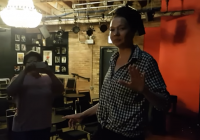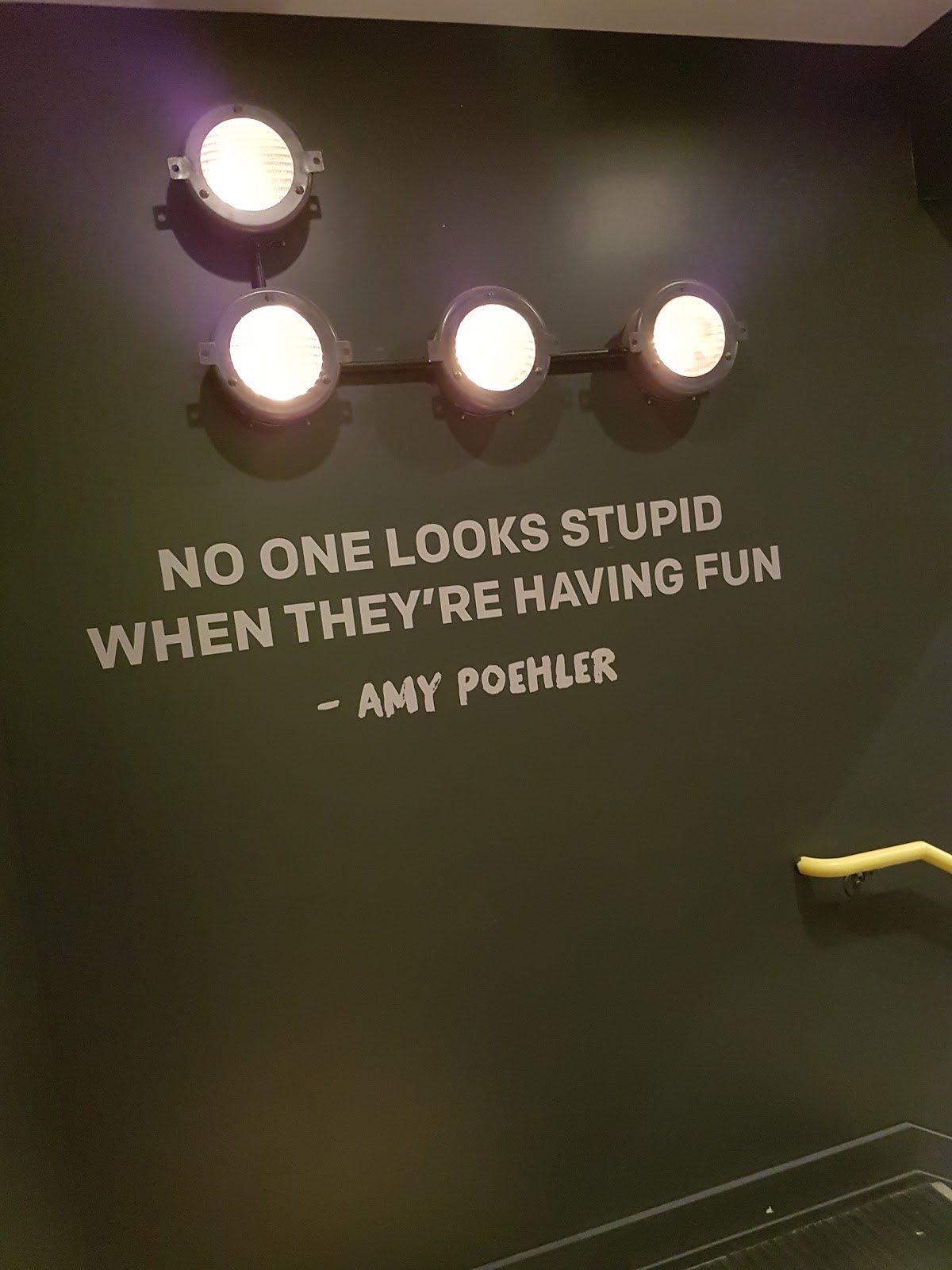Day 3 and following is all about forms
Principles
- Pay attention to convenience: what if the table you need to put your pen on isn’t just next to you but a little across the room – so you move (and think) and so we establish more about the geography of the room you’re in.
- Establish a “home” for a character. Move away and change voice and we know it’s a new character.
- The “pass the energy” warm up (below) is not 14 separate games but one game… we’re all in control of our own game (this is the Harold). Harold is the main rule and we have to do like the warm up game (watch, get it, accept that they’re doing the same basic moves, support them)
- Plots and premises are reasons to feel. We don’t need that, the other person is enough.
- Feel AT someone and proof shows up
- In a group scene there can be only 2 points of view (doesn’t have to be opposing, can be just different to each other: I love you, your tie is crooked
- is this character like this with everyone (e.g. sits on guy’s lap – will she do this with her boss, her mum, her bus driver, her work mates?)
- Rance’s signature “bad scene” is a unicorn and stick of butter (go figure)
- Play like kids in a toy store: every little thing, tag out and play with it, (and then go back to source)
- feel towards outside stuff (a painting, a house, someone who isn’t there) no response. Feel towards a person / each other = opportunity to respond
Games
1. Everyone think of their favourite warm up (one which passes energy around, like a clap or a “yes”, not one which needs others to “take” energy from you, like a musical hotspot where change is because someone tags in). Then everyone did their chosen warm up while passing the energy around (cool fun! and it exposed us to some new warm up games). Remember to play the whole game (i.e. if you’re doing zip zap zop then you need to count how many times the energy is passed so you know whether to say zip, zap or zap).
2. Same game as above, but this time after you’ve done your own game 3 times or so, start borrowing and combining with others
Forms
Beer Shark Mice
- kind of an ADHD follow the shiny object form – we need to remember where the shiny thing began
- one source scene
- everything is connected to that scene
- lots of tag edits / taglike edits
- don’t need to follow plot of premise, follow character
- if you tag someone out in a scene they are the same character, but you are a new one
- return to the source scene character or source scene location to freshen up
- thematic or character pulls
- when in doubt, reconnect everyone in the original source scene
- no need to re-explain what happened in the last scene
- game-heavy format
- if one of the characters in the source scene isn’t in it, it’s too far from the source scene (maybe you can go one more degree of separation, but no further)
- try showing the same character in different places (always angry, but not with puppies)
We practiced the form this way (5 people on stage)
1. begin with all characters on stage
2. start with 2 characters, but all characters must be established before the first tag out
3. start any way you like, tag in or out as soon as you like, can always come back to source scene to get more characters
Shotgun
- gives more grounded scenes – fewer tags and games than beer shark mice)
- all characters in a car (we played with 4 or 5)
- it’s a “living room” in character, on the road
- if something comes up and sparks our interest we go see it in a scene
- we may never leave the car – the more people there are in the car the more likely it is that we’ll stay in the car
- it’s NOT about the destination (of course)
- if the scene goes to the side everyone leaves the car (or not) moves the “car” (or not).
- the side-scenes do not need to keep the characters from the car
Monoscene
- All in one place
- no time jumps – in real time
- no geographical jumps
- it’s this scene, forever, now.




